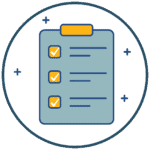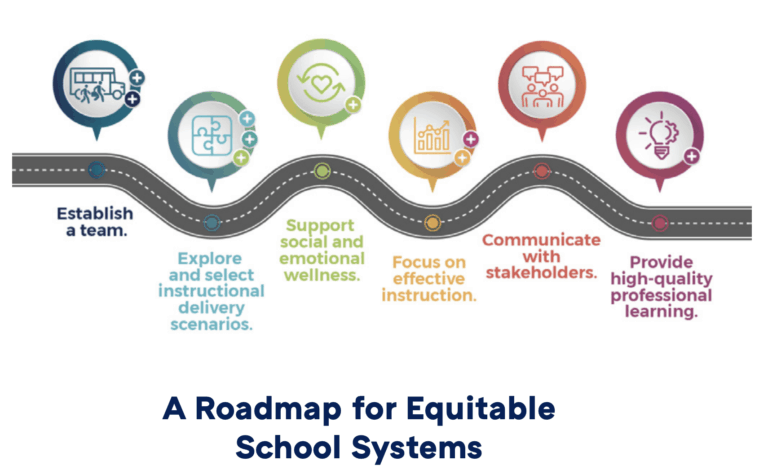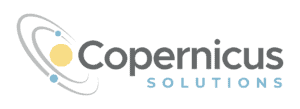GETTING STARTED:
plan and engage; Scope and Sequence
How will you adapt and reframe your plans for the year to accelerate progress?
WHY
- Accelerating learning is a comprehensive approach. According to the Brookings Institute, when the components of a system are misaligned, changes in one component (e.g., curriculum reform) may yield few improvements in student learning if the other parts of the system (such as assessment and pedagogy) are not similarly adjusted. Accelerating progress will change the way in which teaching is done, and changes will not be successful if the full team is not committed to leaving business as usual behind. It is not just a fad or program, and it is also more than “common sense teaching” or “good first instruction.” It is intentionally thinking beyond just “remediating” and, as such, requires understanding and buy-in across the organization.
- Including powerful tools like scope, sequence, and pacing in the planning stages supports educators in accelerating learning with more ease and leaders in creating the systems, calendars, and schedules that support the work. If leaders create a district plan for these tools, staff can look ahead to see where development is going and intentionally scaffold learning.


KEY TAKEAWAYS
- Alignment requires deep commitment. If you think of learning acceleration as just a “program” for some kids during a moment in time, then the results of these efforts will also only be temporary—and they will fail to create the impact and equitable opportunities that learning acceleration can offer.
- Ensuring team buy-in is critical when shifting to something new. Staff, who will co-create and execute programs, need to be on-board for learning acceleration efforts to flourish.
- Make the plan specific and comprehensive. Ensure your plan has action steps that are clearly delineated by time and by role. Clarity will help adoption and reduce friction and confusion. Invest the time now to make sure the plan maps out the full year. The best time to plan the calendar is before school starts.
- Check on needed resources. Ensure that all your schools have the resources, materials, and professional development opportunities needed to do this work.
- Create school systems to support your strategy. Your strategy will only work as well as your systems. Do you have a structured intervention block? Do you have a vertical alignment meeting structure set up for your teachers? Do you have a system for reporting and monitoring student performance on the standards you’ve prioritized? Your schools will need these systems and more to ensure that students master grade-level standards this year.
- Create a comprehensive plan that takes into consideration the unique demographics of your community. Given time and resource constraints for some LEAs, the included tips may provide a starting point for leadership teams as they roll out a full reevaluation of their scope and sequence. For a deeper dive on prioritizing standards, see these CDE’s resources.
When creating change in school systems, the analogy of the rider and the elephant is a helpful one. When we want to lead change, we must appeal to both the rational side (or “rider”) and the emotional side (or “elephant”). The rational side requires an understanding of where we are going and how to get there, but we cannot bring someone on this journey of change without also motivating them emotionally. No matter how skilled the rider, the elephant and rider will not move forward if the elephant has decided to dig in its heels. Change will not happen if you only lay out a great plan but fail to acknowledge and address emotional responses to it. (Episode 7 of CCEE’s Leading Forward Podcast discusses this topic.)
Change is hard, so here are some ways to ensure success as your team embraces a new way to support students:
- “Direct the rider” (set the direction): Include your team from the very beginning, when envisioning the end result and setting goals. This work plan will walk you through the following steps (briefly summarized below) for you and your team to work through together.
- Get clear on what accelerating learning is and isn’t. As a team, review the Core Beliefs overview and TNTP’s report “The Opportunity Myth.”
- Identify your ideal future state (North Star). The work plan contains an exercise you and your team can use to brainstorm, identify, and synthesize a succinct statement about your desired future state that frames it as a SMART goal (specific, measurable, attainable, realistic, time-bound). Whether you take language and the infographic from this playbook or create your own, make sure you can clearly and succinctly articulate what you want to see for your students, what your philosophy is, and how it will improve outcomes. And say it often.
- Unpack your assumptions about the future state. As a group, work together to describe the environment, in every sense, that is required for the successful creation of the future state. For each of the supporting conditions and structures in this playbook, list what must be true in order to reach your desired state.
- Define your current state. Describe the current state of each of these components. To the extent possible, rely on data and observable measures. Audit your existing intervention programs. Look through your MTSS framework, pull a list of all remediation and intervention programs, and look at intervention trainings for staff. Where are you filling gaps and where are you building bridges? Is your system adequately designed to eliminate the need for remediation by giving students access to grade-level content?
- Map the future state. Check for alignment and dissonance. Where do your ideal future state and your current state align and where are they out of sync? Make sure to check existing intervention programs, policies, handbooks, your communication with families, policies, programs, curriculum, and training. For each of the enabling conditions and support structures, compare the current state to the future state. Together, make a list of where you see alignment (and celebrate it with your team) and where you see dissonance. Where there is dissonance, identify which areas need the most work to reach the desired outcome and which are the most important.
- Identify needed resources. As a group, brainstorm what your functional, human, and organizational needs are to reach the desired state. Take into account how you will structure the school day and instructional time, how you will use and leverage community-based organizations, how families can contribute to learning acceleration, and how you will engage in continuous improvement. In terms of financial resources, FutureEd offers a whole playbook with tips on how to use relief funds.
- “Find the motivation” (unpack emotions and create buy-in): This is an ongoing part of the change management process; make space for and acknowledge emotions at every stage.
- Address your team’s emotional shifts at different stages of change. Change is something that happens to people, even if they don’t agree with it. Transition, on the other hand, is internal: it’s what happens in people’s minds as they go through change. Change can happen very quickly, while transition usually occurs more slowly. This resource on Bridges’ transition model can help you identify what emotions usually surface during different parts of the transition process and plan how to address them in effective and thoughtful ways.
- Engage in continuous dialogue. Keep the communication flowing at every stage.
- Build motivation by discussing questions like these with your team:
- What is at stake if we don’t do this work?
- What will have the biggest impact on achieving our collective vision?
- What could an ideal future look like if this is successful?
- How can we celebrate small victories along the way?
VIDEO RESOURCE
“Adapting Your Scope and Sequence or Pacing Guide”, a 20-minute video developed by the CCEE and TNTP.
- Design and share the process
- Make it as simple as it can be. Share clear and easy-to-follow steps to make it manageable.
- Make it core. Resist the urge to make learning acceleration an add-on. Accelerating learning is the philosophy of how we view teaching and learning. Instead of merely finding a spot to plug in tutoring or blended learning, take a moment to embrace the philosophy of no longer “re-teaching for mastery” for students who have gaps. Instead, strategize based on the belief that, given the right support, students will access grade-level content and that this is the way to break the cycle of perpetual remediation.
- Leverage your federal and state funding. FutureEd offers a whole playbook with tips on how to use relief funds.
- Align your existing work to the philosophy of accelerating learning. Check your LCAP, tech plan, and MTSS vision and make sure you update your LCAP, policies, and MTSS language over the next year to match.
- Communicate succinctly. Share these priorities and how your team will strive to meet them with your larger community (staff, families, partners, etc.). Here is sample communication you can use.
- Commit to continuous improvement. Signal to folks early that this will be an interactive, iterative process that will be linked to real-time data from progress with kids. See more on this topic in this section.
- Design and share the process
Curated Tips: Scope & Sequence
- When redesigning scope, sequence, and pacing, plan comprehensively.
- Consider to what extent this work is already in place. There may already be a scope and sequence or pacing document created with priority content in mind. If not, the Collaborative for Student Success offers some adapted scope and sequence plans from some reputable curriculum providers.
- Do not plan to address unfinished learning through “nine weeks of remediation” or another extended period of remedial content for students. It’s tempting to assume that students will need you to deliver the entire scope of content that they missed; however, we know that students spending significant time in below-grade-level content does not lead to grade-level learning. Instead, use the prioritized approach to support your teachers in identifying which unfinished learning they should focus on.
- Set the expectation that teachers use curricular materials you provide. Encourage your teachers to use the curricular materials you provide, and ground your professional learning in supporting them to use those materials well. Teachers often spend a tremendous amount of personal time developing their own lessons even though evidence suggests that teacher-created materials are not as strong as those pulled from high-quality curricular resources.
- Use curriculum with fidelity. If you are using a district-adopted curriculum, use the curriculum with fidelity. This allows time to plan for scaffolds and extensions that help the learning go deeper. If your school does not have an adopted curriculum, use Student Achievement Partners EQiP Math and ELA rubric guidance to evaluate teacher-created resources and make sure they are rigorous and aligned to big ideas and key concepts.
- Adjust the calendar as needed. Compare prioritized content to the instructional calendar. Modify the calendars needed to help students reach the demands of accelerated learning. Keep in mind intervention needs, ELD supports, and other scheduling constraints. When there is less to cover, you can adjust your pacing around your instructional calendar.
ADDITIONAL RESOURCES
- The New Model of Change Leadership video by the CCEE and Dr. Douglas Reeves
- Video: Developing and implementing a Learning Acceleration Plan video by CCEE/TNTP (21 minutes)
- Community Presentation from the Louisiana Department of Education for accelerating learning
- Instruction Partners Guidance for Accelerating Student Learning
- Helping All Kids Grapple with Grade-Level Content by Achieve The Core
- Pennsylvania Department of Education’s Accelerated Learning guide.
- Collaborative for Student Success Crosswalks for adapted scope, sequence, and pacing guides by some curriculum providers.





